Mendelssohn, Debussy and Pintscher
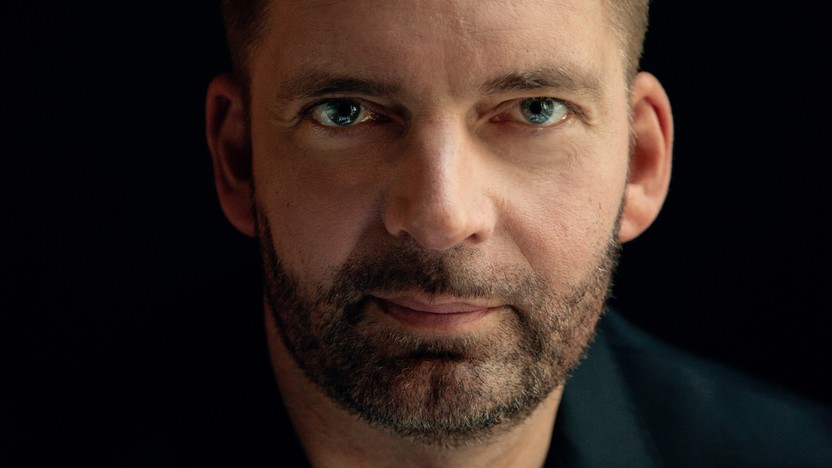
Sponsored By
- May 24, 2013

- May 26, 2013


Sponsored By


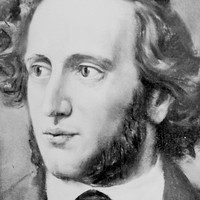 Watch Video
Watch Video
In medieval folklore, Melusina was a beautiful girl cursed to take the form of a mermaid one day each week. She married the knight Reymund, and forbade him from ever seeing her on Saturdays. He betrayed her one fateful day, spying on her in the bath, and she disappeared forever from sight of humans, although the sound of her wailing remained.
Franz Grillparzer created a stage version of the Melusina folktale in 1823, and Conradin Kreutzer developed that play into an opera in 1833. Mendelssohn heard Kreutzer’s opera and hated it, but he did the tale justice when he crafted a concert overture inspired by Melusina for the Philharmonic Society in London. The music outlines the basic contours of the story, with a rolling “water” theme in F major that represents the secret mermaid, and a turbulent “galloping” theme in F minor that suggests Reymund’s intrusion during her bath.
Aaron Grad ©2013
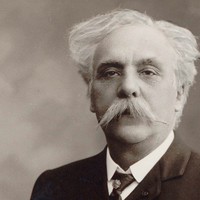 Listen to Audio
Listen to Audio
Gabriel Fauré spent most of his professional life working as a church organist and teacher. Limiting his composing to summers and other slack periods may have reduced his output, but it allowed him to undertake certain projects just “for the pleasure of it.” Fauré’s beloved Requiem was one such labor of love, as was the Pavane, composed in 1887 and intended for a performance by the Paris concert series run by Jules Danbé, a violinist and conductor.
Fauré scored the Pavane for a small orchestra, but the countess to whom he dedicated the work prevailed upon him to add parts for chorus. The countess’s cousin, Robert de Montesquiou, provided a Verlaine-inspired verse on the passions and wounds of love, and Fauré imagined an elaborate production with dancers and an unseen chorus. The Pavane did find its way to the stage when it was incorporated into Fauré’s Masques et bergamasques in 1919, but the work has been heard most often in its original orchestral version.
Fauré’s Pavane updates a French dance style from the sixteenth and seventeenth centuries. The term might be related to the city of Padua, the likely birthplace of the dance, or it could stem from the Spanish word for peacock, pavón, a derivation that matches the grand and stately character of the dance style. This Pavane has an antique atmosphere from the start, with a lute-like plucking pattern supporting woodwind phrases in dotted rhythms, a hallmark of French Baroque music. A central episode grows forceful and agitated, but the song-like melodies and delicate plucking return to close the work on a pensive note.
Aaron Grad ©2013

In the prosperous Mendelssohn household, support for young Felix went beyond just nurturing his musical ambitions. The family socialized with the likes of Johann Wolfgang von Goethe and Georg Wilhelm Friedrich Hegel, and the bookshelves were stacked with the world’s finest literature, including a new German translation of William Shakespeare’s plays published in 1825. At age 17, Mendelssohn used A Midsummer Night’s Dream as inspiration for a sensational concert overture, making reference in the music to the comedy’s magical elements and bawdy humor.
Mendelssohn returned to the same themes seventeen years later when he contributed incidental music for a new production of that Shakespeare comedy in Potsdam. The selections included the earlier Overture, as well as thirteen new sections using chorus, vocal soloists and orchestra. The movements for orchestra alone — the Scherzo, Intermezzo, Nocturne and Wedding March — originally served as entr’actes interspersed among the plays five acts.
The Nocturne was designed to follow Act III, which ends with the play’s four young lovers asleep in the woods. This night music begins with a dreamy melody for solo horn, and it builds to a more impassioned central section driven by throbbing strings. The bewitching Scherzo prefaced the first entrance of Puck, a mischievous fairy, at the start of the second act.
Aaron Grad ©2024
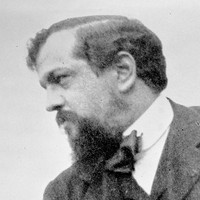 Listen to Audio
Listen to Audio
Claude Debussy’s earliest compositions reflected his training at the Paris Conservatoire and his fascination with Richard Wagner. Debussy soured on Wagnerism in 1889, and just then he encountered a new set of influences that changed the course of his music. At the Universal Exposition held in Paris, Debussy soaked up Asian influences, especially Javanese gamelan music. Around the same time, he began circulating with the Symbolist poets, including Stéphane Mallarmé and Paul Verlaine.
One hallmark of Symbolist poetry was to emphasize the sounds of words, not just their meanings. Similarly, the gamelan music that Debussy heard was static and trance-like, freed from the inexorable tension and resolution that drove Western art music in the mold of Wagner. As Debussy explored these new ideas in his music, he also found parallels in simpler styles from centuries past, including the dance suites that flourished in France in the seventeenth and eighteenth centuries. One of Debussy’s first efforts in this historical direction was the Suite Bergamasque, from 1890; he followed in 1894 with a Sarabande, originally included in the collection Images, and later incorporated into another suite loosely modeled on Baroque dances, Pour le Piano.
Debussy’s Sarabande progresses “with a solemn and slow elegance” that mirrors the stately pace of the Baroque dance for which it was named. (The dance originated in Spain’s American colonies as a type of song accompanied by guitar, but it came to indicate a slow, ceremonial style in a 3/4 meter.) Archaic harmonies and humble, stepwise melodies further reinforce the nostalgic tenor of the music. Maurice Ravel orchestrated this Sarabande in 1923, five years after Debussy’s death, and a year after his legendary transcription of another composer’s piano music: Mussorgsky’s Pictures at an Exhibition.
Aaron Grad ©2013

In 1937, Paris hosted the Exposition Internationale des Arts et Techniques dans la Vie Moderne (“International Exposition dedicated to Art and Technology in Modern Life”), otherwise known as the Exposition Universelle or “World’s Fair.” It was the sixth time the city had staged a gathering for world technology and culture, dating back to 1855. The most famous exposition occurred in 1889, when Gustave Eiffel built his eponymous tower, and where Claude Debussy and other young composers first heard the hypnotic sound of an Indonesian Gamelan ensemble, forever altering the course of French music.
During the 1937 Exposition, Duke François d’Harcourt hosted a dinner at the Maison de la Chimie (House of Chemistry) for which he commissioned short orchestral compositions from Francis Poulenc and his “les Six” comrade Georges Auric. Poulenc’s biographer Henri Hell reported that the march titled 1889 accompanied the “pineapple course,” the Rustic Intermezzo was paired with cheeses, and the 1937 march concluded the dinner; Auric’s contributions, meanwhile, accounted for the entrance music and the sorbet and coffee services.
Poulenc packaged his three selections as a short orchestral suite titled Deux Marches et un intermède (Two Marches and an Intermezzo). The opening Marche 1889 references the legendary World’s Fair of that earlier year, and the music has a Belle Époque flavor to it, harking back to that simpler and more optimistic age. (Bear in mind that the most notable contributions to the 1937 exposition were the pavilions for Hitler’s Germany and Stalin’s Russia, as well as Picasso’s oil-on-canvas Guernica, painted in response to the bombing of that Spanish city.) The Intermède champêtre has a rustic, pastoral character that would have matched wonderfully with the raw, earthy cheeses that must have been on the menu. The Marche 1937 is comparatively dark and menacing, perhaps a reflection of the war clouds hanging over Europe at that time.
Aaron Grad ©
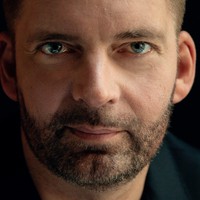 Listen to Audio
Listen to Audio
As from nothing, something created—something natural—comes into existence: Matthias Pintscher has taken this as his theme in his new ensemble composition bereshit.
“In a beginning…” refers to the biblical creation myth: “bereshit” is the first word of the Torah, of the Old Testament. This concept contains the idea of an approximation — “a” beginning, not “the” beginning, a turning point. This is the starting point of Matthias Pintscher’s composition bereshit for large ensemble. It deals with nothing less than the act of creation, the formation of the natural.
Pintscher describes this feeling as the starting point for his composition, “As if you woke up in the pitch darkness of night in a strange room and only realized after a few seconds where you were. In this state you attempt to make out the shapes of the space. It is a beginning of a beginning from absolute darkness and shapelessness. Quite cautiously and gradually particles free themselves, then condense and fit together in shapes.”
Imagining the creation of things is a metaphor for the creation, the creative act, and its incomprehensibility. It ultimately also describes the process of perception, of a person’s development of awareness. It is a philosophical reflection in itself. A portrayal of this can be found in music as an art of processes.
“bereshit emerges from an initial sound,” the composer says, “as if from an absolute nothing, from a sound which subsides into percussive noises, from which elements then disentangle themselves and condense. It is a very organic piece, the material is treated quasi chronologically, it develops slowly. The composition emerges from the idea of freeing an entire compendium of sounds, gestures, rhythms, orchestrations from an original state of sound. There is a central note, an F, which opens the piece and stretches through the piece like a horizon.”
A genuine conception of processes, which Matthias Pintscher has developed in his most recent compositions—such as the Violin Concerto, Mar’eh, and the choral work she-cholat ahava ani, for example—becomes, as it were, the program here: “What interests me is the flowing sounds and colors, the conception of a sonority in perspective. The piece is about this great river, about a continuum of sounds and events that is continually transformed as the piece grows. Only gradually do things solidify, and there are solo episodes. bereshit continues what I have developed in sonorities in recent years. In its conception of sound and spatial effect, this piece goes far beyond the chamber music-like dimension of the ensemble forces.”
Marie Luise Maintz ©2013
<br/><strong>Youth Chamber Music Contest Winners Performing</strong><br/> <p>The Luna String Quartet, winners of the 2013 SPCO Youth Chamber Music Competition, will perform works by Haydn and Shostakovich prior to Saturday evening's performance, at 7:30 p.m. in the Marzitelli Foyer. Please join us in congratulating these talented student musicians.</p>
<p><strong>Video:</strong> The Luna String Quartet performs the first movement of Mendelssohn's String Quartet in F Minor, Op. 80.</p>
